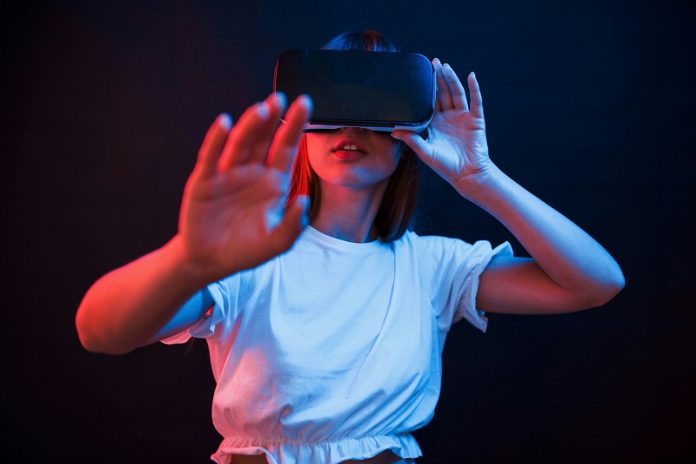
Imagine if working out could feel less like a chore and more like playing your favorite video game.
Researchers from the University of Bath believe this could become a reality with new technology that uses virtual reality (VR) games to make exercise more enjoyable.
These “exergames” combine screen time with physical activity, but there’s a challenge: like with regular exercise, many people stop playing once the workout starts to feel too tough or boring.
To solve this problem, computer scientists at the University of Bath have come up with a smart idea. They are developing exergames that use special sensors to measure how a person is feeling while exercising and adjust the game in real-time.
If the person is feeling tired or struggling, the game could become easier. If they’re doing well, it might get a little harder to keep things exciting. This keeps players engaged and motivated, which could help them stick with their fitness routines for longer.
Dr. Dominic Potts, who led the research, explained the big issue with exercise: “When it comes to physical exercise, staying motivated is a huge problem.
With exergames, we can keep people interested and improve their performance by changing the difficulty of the game based on their mood and abilities.”
The team’s goal is to create exergames that adjust to how a person feels during a workout. For example, if someone is struggling, the game might offer more rewards to encourage them. If the player is doing well, the game could introduce more obstacles to make it more challenging.
Personalized exergames are not a new idea, but it has been hard to find a reliable way to track a person’s emotions while they exercise.
Measuring someone’s emotional state while they’re sitting still is easy, but it gets tricky when they start moving. Things like blinking, sweating, or changes in heart rate can all happen during exercise, and it’s hard to tell whether these changes are caused by the person’s emotions or by the physical activity itself.
The team at the University of Bath made an exciting breakthrough by using a new set of sensors. These sensors can be built into VR headsets or wearable devices like smartwatches. They track physical signs like pupil size, facial expressions, heart rate, and even how much a person is sweating. By collecting data from these sensors, the game can adjust in real time to keep the player engaged.
To test this idea, the researchers asked 72 people to take part in a VR cycling race. As the participants pedaled through different virtual environments, the scientists used sensors to measure their emotional responses. The virtual environments were designed to make people feel different emotions, like happiness, calmness, stress, or sadness. The participants cycled through these environments at different levels of difficulty—sometimes easy, sometimes hard.
The sensors measured things like how much the participants were sweating, how their heart rate changed, and even how their pupils reacted. By comparing this data to the virtual environment and the intensity of the workout, the researchers were able to accurately understand how each person was feeling.
Based on this research, the team came up with several recommendations for game designers to help make future VR exercise games even better. For example:
- Sensors that track pupil size should be able to correct for changes in light in the virtual environment.
- The game should take into account how much a person is sweating before they start to exercise, as this can affect stress levels.
- The data collected by the sensors should be cleaned during the game to remove anything that doesn’t relate to the player’s emotions.
- Using multiple sensors at once will help get a better picture of a player’s emotional state.
Dr. Christof Lutteroth, one of the researchers, said, “In the long run, we want VR exercise to be emotionally intelligent. We expect VR physical activities to become even more popular in the future, especially for things like school programs, rehab, and sports training.”
With this new technology, the University of Bath researchers hope to make VR exercise games that are smarter and more engaging. If the game can sense when a person is feeling tired or bored, it can adjust to make the workout more fun, keeping the player motivated for longer.
As VR technology continues to grow in popularity, we may soon see more and more people using these games to get fit and stay healthy.
This study is an exciting step toward making exercise more enjoyable for everyone, no matter their fitness level or emotional state.
By turning workout pain into pleasure, VR technology could change the way we think about exercise.


